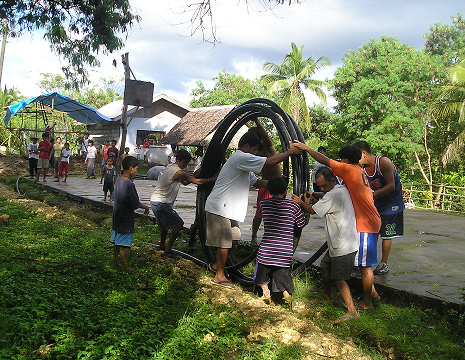 The label “poor” carries with it many connotations, all of which denote a sense of being in need and lacking in many respects. The usual impression is that the poor don’t have much, and in extreme cases, don’t have any. Hence, they need external interventions so they can acquire needed resources to get them out of poverty.
The label “poor” carries with it many connotations, all of which denote a sense of being in need and lacking in many respects. The usual impression is that the poor don’t have much, and in extreme cases, don’t have any. Hence, they need external interventions so they can acquire needed resources to get them out of poverty.
However, what we normally do not realize is that while communities may be poor or wanting in some respects, these communities are rich in many other aspects. For example, a community may
- have good leaders or strong community organizations that are dedicated in assisting the community;
- maintain good relationships with the government and other partners that can be tapped to help the community;
- possess a rich culture that encourages community members to help each other;
- have strong social ties that allow for supportive mechanisms; and
- maintain harmonious relationships with a natural environment that provides for the community’s needs.
These are just a few examples of a community’s wealth. The difficulty is that these forms of wealth are mostly intangible and are therefore hard to measure and value in monetary terms. As a result, these oftentimes remain unrecognized, untapped and unutilized. Communities do possess a variety of these intangible assets or capital, which can, if managed well, play an important role in generating more intangible and even tangible assets needed to improve the well-being of a low-income community.
KPA recognizes at least seven types of intangible assets.
| TYPE OF INTANGIBLE ASSET | EXAMPLES |
|---|---|
| HUMAN CAPITAL | Experiences and skills of community members, exceptional local leader, training and experience from previous work, education, energy of youth, aspirations, community memory |
| SOCIAL CAPITAL | Informal relationships, loyalties and roles based on trust, respect, long practice, kinship, which have been contributing to united and effective community action |
| INDIGENOUS KNOWLEDGE | Specialized skills handed down orally or through mentoring, such as in music and arts, natural remedies, medicinal herbs, martial arts, etc. |
| CULTURAL CAPITAL | Community beliefs and practices, local artifacts or places with national cultural or historical significance |
| NATURAL CAPITAL | Access rights to natural, scenic and other resources based on traditional practice, location or proximity, formal agreement, permission from government or donation from private sector |
| STAKEHOLDER CAPITAL | Reputation of the community, relationships with outside organizations or individuals, various forms of support from external groups |
| STRUCTURAL CAPITAL | Presence of community-based organizations, tools, technologies, processes, records and systems of the community |
